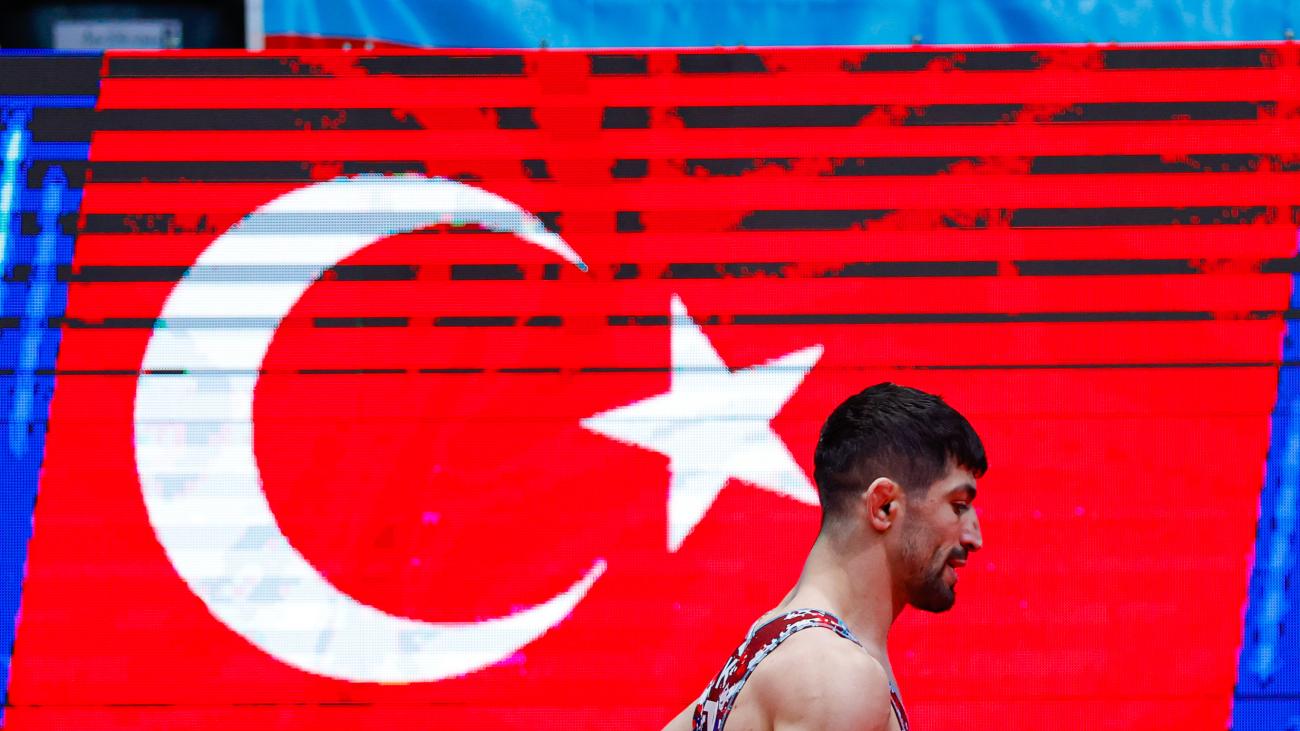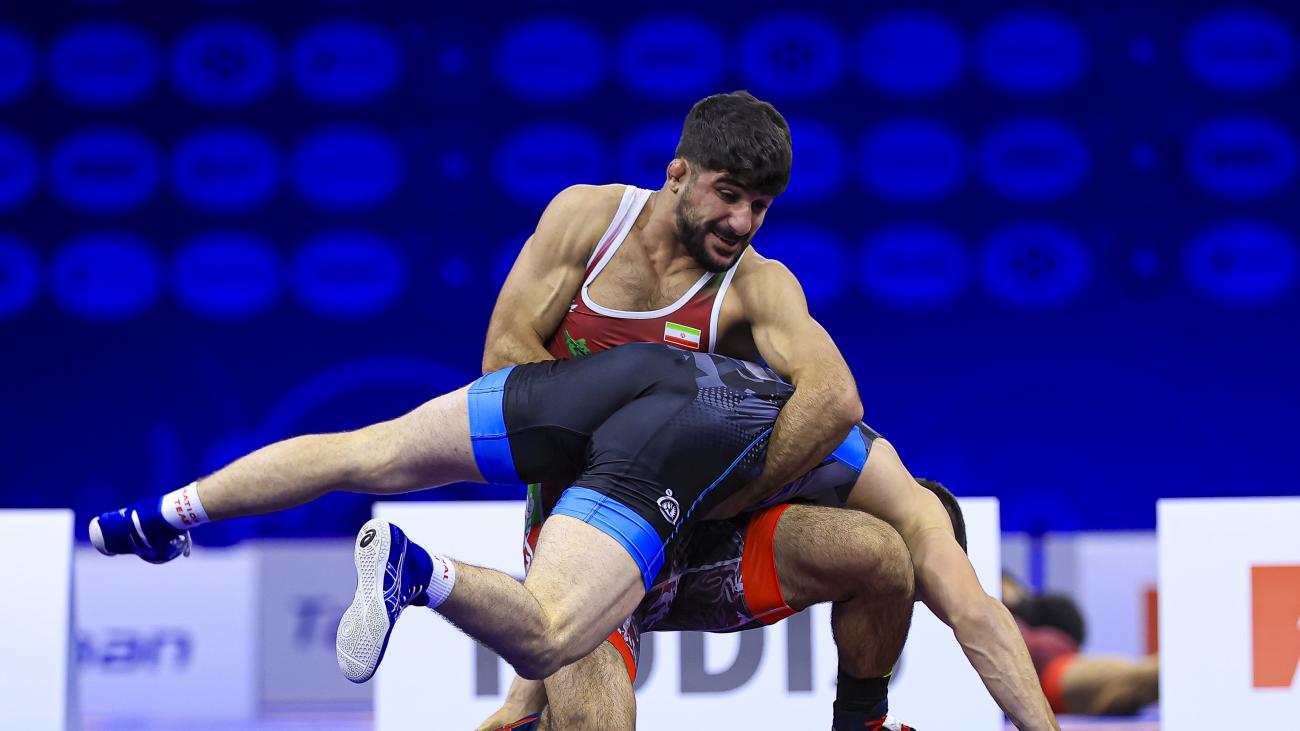March Matness: America's Proving Ground for Future Olympic Stars
Before American wrestlers can achieve Olympic glory most must endure the crucible of the NCAA Division I Wrestling Championships. This year’s tournament -- far and away the most popular annual wrestling event in the United States -- visits Oklahoma City, a hotbed of wrestling talent and interest in America. There, on the dusty plains of Oklahoma, 330 of the country’s best college wrestlers from more than 70 schools will wrestle in over 500 matches across eight mats over three days.
There to watch will be more than 20,000 wrestling fans.
Spectators help make the event special by dressing in the colors of their beloved schools: black and yellow for the University of Iowa, white for Penn State, orange for Oklahoma State and carnelian for Cornell.
Unlike the more technical international styles, the NCAA style requires that athletes compete with an impassioned, brawling style, full of shoving, bleeding, and screaming. The goal of the competition, and their careers at-large, is to earn a precious spot on the awards stand having earned the title “All-American.”
These wrestlers have come together annually for 86 years, and since the NCAA Wrestling Championships’ rise to prominence in the early half of the 20th century, NCAA member Universities have produced the vast majority of United States Olympic and World wrestling medalists.
In the last decade, three of the four American Olympic gold medalists in freestyle wrestling hailed from elite NCAA educational institutions: Jordan Burroughs from the University of Nebraska, and Jake Varner and Cael Sanderson from Iowa State University.
The very techniques these three wrestlers used to win Olympic gold medals were honed while competing at the NCAA level. Burroughs developed his now legendary double leg takedown while under the tutelage of Nebraska coach Mark Manning, and used the move to win two NCAA championships. Varner employed a sensational ankle pick to propel himself to victory in his 2012 Olympic gold medal match against Ukraine’s Valeri Andriitsev. The use of this ankle pick originated in the instruction of Sanderson, the undisputed master of the maneuver and Varner’s college coach. Sanderson ankle picked his way to the greatest NCAA wrestling career of all time going a perfect 159-0 on his way to winning four NCAA titles.
Though Sanderson would experience great success as a freestyle wrestler after college, his transition illustrated the differences between American folkstyle and the Olympic style of wrestling. Early in his freestyle career, Sanderson failed to dominate the world competition way he had his NCAA competition. No longer could he get away with staying on his knees after a failed takedown attempt, as freestyle awards points for instant counter back exposure. Also, Sanderson could no longer utilize the superb mat-wrestling skills he demonstrated in college, as freestyle emphasizes a bottom man who stays static while giving the top man only a few seconds to work.
Wrestling in college can leave an American ill-prepared to cope with some of the finer technical aspects of Olympic-level wrestling, but it inculcates it’s participants with unmatched toughness, conditioning and tenaciousness in their approach to the sport.
While American wrestlers serve as the primary beneficiaries of NCAA Wrestling Championships experience, other nations have drawn from the tournament’s deep well of talent. In fact, in the last 20 years, almost every single Olympics has featured an NCAA wrestling alumnus representing a country other than the USA.
At the London Olympics, NCAA champion Franklin Gomez and Matt Gentry represented Puerto Rico and Canada, respectively. In the 1960’s three-time NCAA champion, Yojiro Uetake of Oklahoma State won Olympic in 1964 and 1968 for his home country of Japan.
As NCAA wrestling champions maintain their visibility in international competition, the prestige of the NCAA Wrestling Championships continues to grow in the United States. Year after year, the host cities get bigger, and the arenas grow larger. In 2016, the NCAA Wrestling Championships will come to America’s biggest city, and media capital, New York, where Madison Square Garden, “The World’s Most Famous Arena” will host the action.
For those who cannot make it to the 2014 edition of the NCAA Wrestling Championships, American television sports giant ESPN will broadcast every round of competition on affiliate channels, with Saturday’s finals enjoying a coveted spot in primetime on ESPN’s primary station.
Millions of viewers across the United States will watch the electricity of the capacity crowd as they cheer on their favorite wrestlers, each in pursuit of an NCAA championship. They’ might not recognize it at the time, but they’ll also be watching the beating hearts of America’s Olympic wrestling future.





